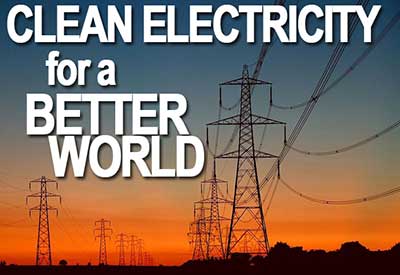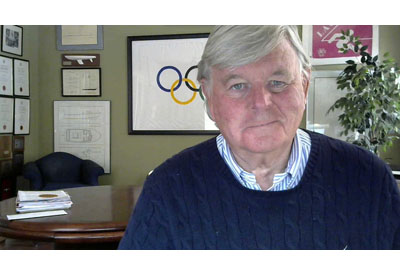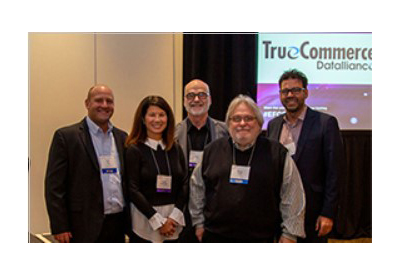Why Elon Musk Thinks the Future Is Bright for Utilities

Gavin Bade
At the Edison Electric Institute’s recent annual convention in New Orleans, LA, Tesla CEO and SolarCity Chairman Elon Musk struck a conciliatory tone toward the utility industry while Energy Secretary Ernest Moniz spoke about the need for a modern grid.
Sitting alongside Tesla CTO JB Straubel, the duo were interviewed onstage by EEI Chairman and Southern California Edison CEO Ted Craver. When asked about grid defection and the ongoing “war” between utilities and solar installers, Musk spoke mostly from Tesla’s perspective, saying the future for utilities is bright.
The key, Musk said, is the shift toward an electricity-based economy. As consumers transition from petroleum-fuelled vehicles to electric ones, Musk predicted that electricity demand would double or more, creating a huge new market for utility services. In the long run, distributed generation will likely account for about a third of electricity generation, Musk said, so there will still be plenty of need for central station power and the grid.
Bringing down the cost of batteries — and using them for what they’re really for
The shift toward an electrified economy is already happening, Straubel said, but utilities can help companies like Tesla streamline charging processes so that owning an EV becomes as simple as owning a gasoline-fueled car. Utilities in California are already moving to install car chargers at strategic points around their service areas, as are some rural co-ops. But EV sales won’t really take off until companies begin offering a full range of electric cars and trucks at every price point, according to Musk.
Getting to that point will largely depend on whether the market can bring down the price of energy storage, Straubel said. He predicted that we will see a “massive increase in scale” in battery manufacturing on the scale of Telsa’s Gigafactory, an enormous battery factory under construction in Nevada. Those economies of scale, driven by a jump in demand for batteries from car companies and utilities alike, will make storage costs fall faster than anyone is anticipating, Straubel said. By the end of the decade, the Tesla team would be “disappointed” if battery costs weren’t in the US$100 per kWh range, a price that would make their value proposition to the utility industry very strong.
Tesla is making big waves in that market already. On May 1, Musk announced two new stationary storage products, one for the home consumer and one for utilities on the grid, sending the whole industry into a tizzy. In one week, Tesla sold out of a year’s supply of the batteries, with 38,000 reservations for Powerwall, the residential battery, and 2,500 for Powerpack, the grid scale batteries that can be stacked together to be “infinitely scalable,” as Musk likes to put it.
In all the excitement surrounding the battery announcement, Musk told the audience at EEI that some confusion had arisen about the primary usage of the Powerwall home battery. At this point, he said, the value proposition for Powerwall is largely to provide backup power during an outage — more of a “security argument” than an economic one. Driven by comments from SolarCity that Musk said “were not completely correct,” many media outlets have reported that the Powerwall’s primary function is to integrate with rooftop solar panels, a notion that could greatly increase solar’s value to the consumer and grid. But, as Bloomberg pointed out last month, the batteries aren’t necessarily ready to synchronize with rooftop panels just yet.
Musk said that he and SolarCity executives “had a conversation” about the public relations snafu surrounding the battery to get them all on the same page. He also said he would announce more detailed pricing information around the Powerwall and Tesla batteries in general at the Tesla shareholders meeting.
But all the focus on the potential of the Powerwall battery may be misguided. “We anticipate that 90-95% of energy storage sales will come from the Powerpack, not the Powerwall,” Musk said.
Strabuel said that as the price of grid scale storage drops, batteries will soon become the most cost effective solution for distribution system upgrades, while also adding reliability backstops to the system. Those distribution-level services, like voltage optimization and accounting for variable renewable generation, will be the initial role for batteries, not bulk power supply, both Musk and Craver agreed.
On subsidies, business models, and a sustainable energy future
In all, Musk said he wants a dialogue with utilities on how to “build a stationary storage technology that helps us take things to a whole new level,” completing his courtship with the sector at the EEI event. But while he shied away from the contentions SolarCity holds with utilities, he pulled no punches when it came to defending his companies’ business models.
When asked by Craver about an LA Times article that noted his companies received $4.9 billion in taxpayer subsidies, Musk shifted forward in his seat. “I wouldn’t call what the LA Times wrote journalism,” he said. “It was terrible.”
Musk said the main issue with the piece was that it lacked context. The article counted subsidies his companies had already paid back to the federal government, he said, as well as subsidies not yet received. Tesla’s subsidies, he said, amounted to about $150 per car — and none of that money had even been received yet.
(The mention of Space X, Musk’s aerospace company, was even more “ridiculous,” he said, since competitors like Lockheed receive “1000 times more” than Tesla. The Times threw in the Space X detail “just to be a**holes,” Musk said.)
But beyond Musk’s frustration with the Times was a larger and more important insight about the energy economy. When addressing SolarCity’s subsidies, Musk said that this “clunky” system of government support is the product of society’s failure to put a price on carbon pollution. Without that “error in the pricing system,” there would be no need for government incentives for renewables, because the cost of carbon pollution would push society toward renewables on its own. Until we fix that market failure, he said, we have to live with the subsidies, as they are necessary to move us toward a greener future.
“Whether someone is rich or poor,” he said in closing,” they still want a sustainable future.”
Secretary Ernest Moniz: EVs — and utilities — key to modern grid
Many of the subjects addressed by Musk and Straubel were previewed by Secretary of Energy Ernest Moniz, who spoke ahead of the Tesla duo.
Utilities, EVs, and the value of grid services
In his speech, Moniz put emphasis on the need to modernize the grid, and singled out electric vehicles as a place the Department of Energy can work with utilities to make the economy more sustainable and add new capabilities to the grid. When he finished speaking, Moniz and EEI Chair Carver signed a memorandum of understanding (MOU) on electric cars, called the EV Everywhere Utility Partnership. The collaboration will combine existing DOE and utility programs to increase charger accessibility, especially at the workplace, and study the effectiveness of utility investments in EV infrastructure.
All of that is to work toward the Obama administration’s goal of making EVs as cheap and convenient as gas vehicles by 2022, a goal that Moniz called ambitious, but achievable.
“This is the time to get a comprehensive view” on how utilities can help accelerate that shift to EVs, he said.
Increasing utility investment in EV infrastructure is likely to raise questions about the technology’s value to the grid, an issue utilities commonly struggle with when it comes to rooftop solar and other smart grid applications.
“We need more transparent and broadly accepted methods of characterizing the value of services provided to the grid by existing and new technologies,” Moniz said
The secretary indicated his department will continue convening relevant stakeholders to find methods to unbundle rates for both distributed resources and conventional generation and better value their worth to the grid.
Modernizing the grid and mitigating climate change
Moniz touched on many of the finer points of the DOE’s Quadrennial Energy Review (QER), which outlines the state of energy infrastructure throughout the country and makes suggestions for its improvement. That report called for billions of dollars in new investments, especially in gas pipeline, transmission, and grid modernization, to make the energy system more efficient, resistant to natural disasters, and resilient to any potential cyber or physical attacks.
Noting that “the leadership of both energy committees in the U.S. Congress have publicly stated their intent of drawing upon the QER in developing bipartisan energy legislation,” Moniz said that this year represents a “tremendous opportunity to get something right” when it comes to energy policy. The last broad bipartisan energy bill was passed in 2007.
Those grid investments are essential given the monumental change the U.S. grid is about to undergo as a result of the EPA’s proposed Clean Power Plan. The plan is essential to the electric sector, Moniz said, because of the great damage climate change threatens to cause on the electricity system. On the gulf coast, for instance, Moniz cautioned that “sea level rise stemming from global warming” could submerge hundreds of electric substations, oil and gas refineries, and other industrial facilities on the gulf coast. If you take into account the damage that could be caused by storm surge, as occurred during Hurricane Sandy in 2012, the damage could be even worse.
All that, along with the planetary consequences of climate change, means that the electricity system will need to do its part to reduce greenhouse gas emissions, Moniz said. As Utility Dive has reported, the Clean Power Plan, along with other federal regulations and the declining price of natural gas, is estimated to push 90 GW of coal fired plants into retirement in the coming years. Moniz said that it will be replaced first with natural gas, and then with renewables amounting to 550 GW of capacity.
“We fully expect strong and sustained measures to reduce greenhouse gas emissions, and the electricity sector is going to be crucial for this,” Moniz said.
Gavin Bade, Associate Editor of Utility Dive, attended the Edison Electric Institute’s annual convention. This article has been reprinted with permission from Utility Dive, an online publication that delivers news and original analysis on the transformation of the electric power sector.
Find out more: http://www.utilitydive.com/.











